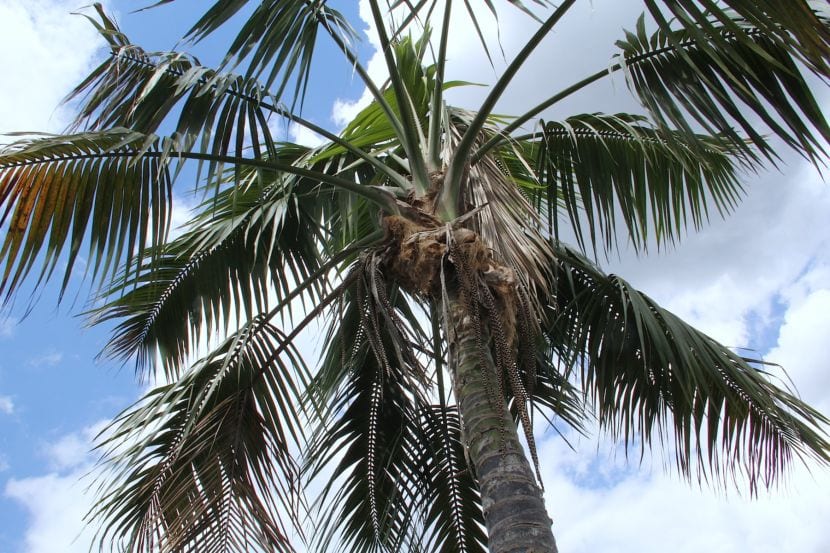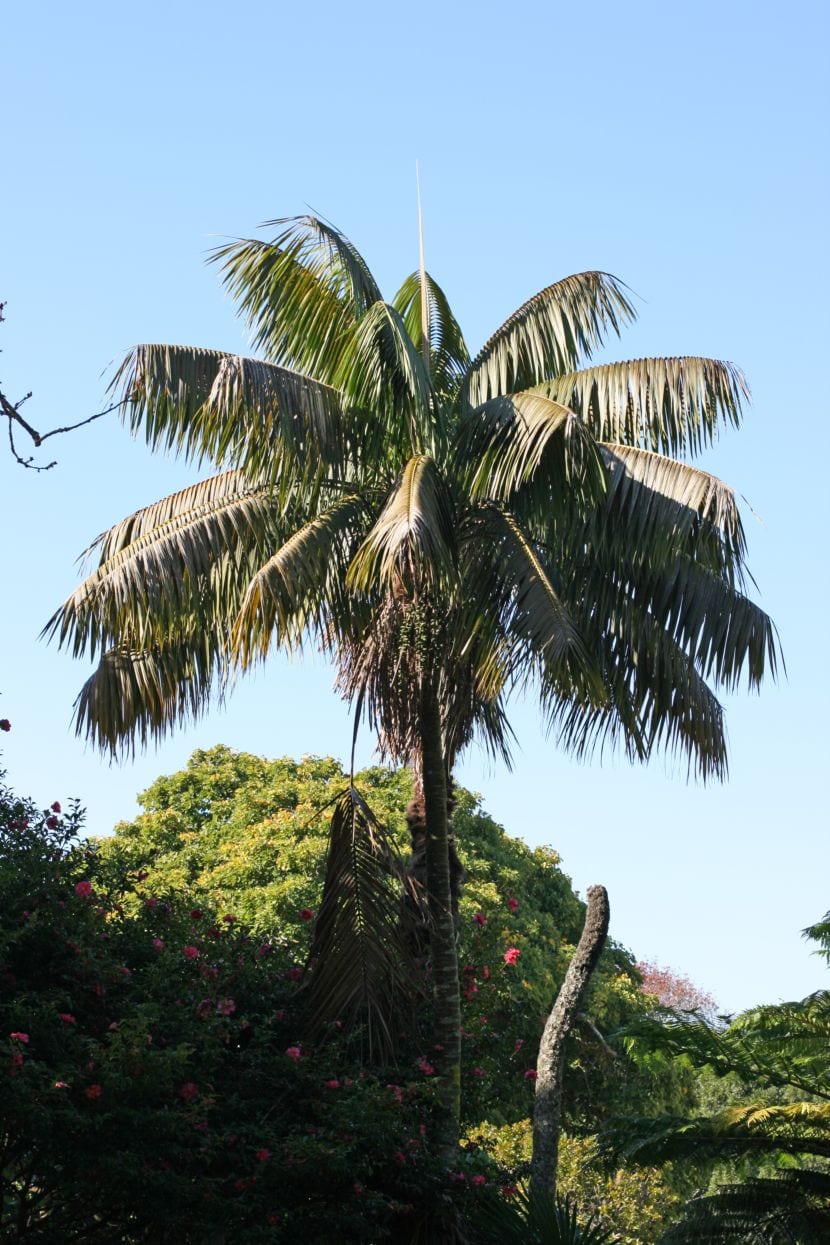
La kentia, whose scientific name is Howea forsterianait's one of the most popular palm trees both indoors and in gardens. Its rusticity, its tropical appearance and its elegance make it possible. Its trunk is rather thin; in fact, it does not usually exceed 30cm in diameter. It has a rather slow growth, and when young it prefers to grow in places with little light.
However, sometimes questions may arise regarding its cultivation and / or care. On this occasion we will try to solve the most frequent doubts so that you can have your Kentia in perfect condition all year round, for many years.

To know how to take care of it, we must first know where it comes from. This beautiful palm tree lives in the jungles of Lord Howe Island, hence its name. It spends its first years growing as if it were a herbaceous plant, sheltered from shrubs and trees. During this time it does not get direct sunlight, but once it gains height little by little it also gives it more direct light, which forces it to produce leaves that are increasingly resistant to sunlight. Once adult, when it has reached 10-15 meters, it is already perfectly adapted to its new conditions.
This in cultivation translates as follows: the palm trees sold in nurseries and / or garden centers normally come from greenhouses where macro-production of plants is made, where they always have the ideal conditions to grow. This means that once we have the palm tree at home or in the garden, may weaken, especially if we have bought a pot in which two or more Kentia have been planted together. It is highly advisable that we do not accustom it to the sun until at least one year has passed, and always bearing in mind that this process has to be done little by little.

The million dollar question: at home or in the garden? Well, all the plants must be outside, but the truth is that, although the climate is favorable for it throughout the year (it resists mild frosts down to -4º), we can have it indoors without problems. We will place it in a very well lit roomotherwise it will be weakened.
To ensure that you can photosynthesize properly, we will wipe the leaves with a damp cloth (distilled water) to remove dust from time to time.
As for irrigation, we must let the substrate dry between irrigation and irrigation. Remember that it is much easier for a plant to die from overwatering than by default. Once a month we can add specific fertilizer for palm trees to the irrigation water; so it will grow more vigorously.
And finally, the transplant. Perhaps the most delicate and questioned subject. It is said to have a delicate root system. It is so. But it is also true that if we remove the entire root ball without it falling apart, from the pot, success is assured. Really.
Good afternoon, Monica
I bought and transplanted a Kentia in late spring. It is in a bright but not sunny area. I have taken into account the advice not to water it too much (I have been told of cases in which they have ended up with a Kentia by flooding it). The point is that some of the leaves have been drying, and it does not seem that it is finding the point to the plant. I do not honestly know what can happen to it, being as they say an easy maintenance plant.
When transplanting it, the root ball fell apart a little on the outside, but I don't think it was enough to explain the state of the plant, since I put it together well with the substrate. Some of the leaves hit a piece of wall, yes, but they are not the ones that seem drier.
When you mean to wipe it with a damp cloth (of distilled water), do you mean that it cannot be with tap water?
Can you guide me?
Thanks for your attention.
A greeting.
Hello Antonio.
Kentia is a palm tree that does not like to have its roots manipulated a lot. No matter how little the root ball has broken, you will notice it.
Still, how often do you water it? You have to avoid puddling, but when you water you have to moisten all the soil well so that the water reaches the roots without problems.
I advise you to water it with homemade rooting hormones a season (4-5 months) so that it can emit new roots.
Rainwater, distilled or lime-free, can be used to clean the leaves. It can be the tap but only if it does not have lime.
If you have any further questions, ask.
A greeting.
all clear. But if it lost almost all the leaves, the few that remain are with brown edges, how do we lift it?
Hi Aurora.
It will depend on what the problem was:
-If it has been watered excessively, that is, if the soil is very humid, then it is best to treat it with fungicide and not water for a few days.
-If, on the other hand, the soil is dry (not only above, but also below), we will have to water more.
If you wish, send us some photos of your palm tree by Facebook and I tell you.
A greeting.